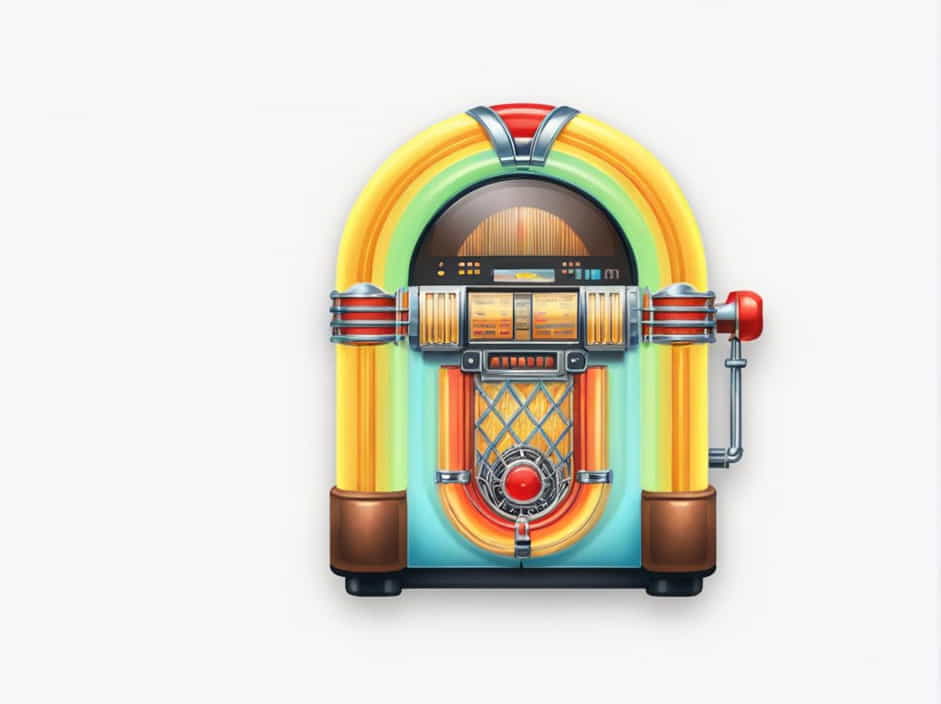The jukebox is an iconic music-playing machine that has been a part of entertainment history for decades. Known for its ability to play songs at the push of a button, the jukebox revolutionized the way people enjoyed music in public places.
Even though digital streaming has taken over, the jukebox remains a symbol of classic music culture, often found in diners, bars, and retro-themed locations. This topic explores the meaning of jukebox, its history, function, and continued significance in modern times.
Definition of Jukebox
What Is a Jukebox?
A jukebox is a coin-operated music-playing machine that allows users to select songs from a list. Traditionally, jukeboxes played music from vinyl records, but modern versions use CDs, digital files, or even internet streaming.
Word Origin and Pronunciation
- Pronounced: /ˈdʒuːk.bɒks/
- The word “jukebox” comes from “juke”, a slang term from the American South meaning “to dance” or “to act wildly.”
- The term became popular in the 1940s when these machines were commonly found in bars and dance halls.
The History of Jukeboxes
The Early Beginnings
The concept of a self-playing music device dates back to the late 19th century, when coin-operated phonographs were introduced. These early machines allowed users to listen to pre-recorded music for a fee.
The Golden Age (1940s-1960s)
The 1940s to 1960s was the golden era of jukeboxes. During this time, they became a cultural phenomenon in diners, cafes, and entertainment venues. Some notable events:
- 1927 – The first commercially successful jukebox was introduced by the Automated Musical Instrument Company (AMI).
- 1940s-1950s – The rise of rock and roll made jukeboxes incredibly popular, especially among teenagers.
- 1960s – Jukeboxes featured in many classic movies, solidifying their place in pop culture.
The Decline and Digital Revival
With the rise of personal music devices like cassette players, CDs, and eventually streaming services, jukeboxes declined in popularity. However, they still exist today in retro-themed restaurants, bars, and collectors’ homes.
Modern jukeboxes now support touchscreen technology, Bluetooth, and online music streaming, keeping them relevant in the digital era.
How Does a Jukebox Work?
Traditional Jukebox Functionality
- Inserting a coin or token – Users deposit money to activate the machine.
- Choosing a song – Songs are displayed on a list, often with corresponding buttons.
- The machine plays the selected record – A mechanical arm picks up and plays the chosen vinyl or CD.
Modern Jukeboxes
Today, jukeboxes do not require coins and may use:
- Digital touchscreens for song selection.
- Wi-Fi streaming to access millions of songs.
- Smartphone integration to let users queue songs remotely.
Why Were Jukeboxes So Popular?
1. A Social Experience
Unlike personal music devices, jukeboxes were designed for shared listening. People gathered around them to enjoy music together, making them a focal point of social venues.
2. Affordable Music Access
Before streaming services, jukeboxes provided a cheap way to listen to popular songs. Instead of buying records, people could pay a small fee to hear their favorite tunes.
3. A Symbol of Youth Culture
In the 1950s and 1960s, jukeboxes became a symbol of teenage rebellion and freedom, especially with the rise of rock and roll music.
Jukeboxes in Pop Culture
Jukeboxes have been featured in many classic movies, TV shows, and songs. Some famous examples include:
- Movies: Grease, Happy Days, Pulp Fiction
- Songs: “Jukebox Hero” by Foreigner, “Music! Music! Music!” by Teresa Brewer
- TV Shows: Friends (Central Perk café had a jukebox), The Simpsons
The Difference Between a Jukebox and a Record Player
| Feature | Jukebox | Record Player |
|---|---|---|
| Function | Coin-operated, plays selected songs | Plays full albums or singles |
| Audience | Public spaces (diners, bars) | Personal use |
| Music Format | Vinyl, CDs, or digital | Vinyl records |
| Control | Limited song selection | Full control over what to play |
Are Jukeboxes Still Used Today?
Yes! While jukeboxes are not as common as they once were, they are still found in:
- Classic diners and retro-themed restaurants
- Bars and nightclubs with a vintage theme
- Arcades and amusement centers
- Collector homes and museums
The jukebox is more than just a music machine—it represents a piece of musical history. From its early beginnings to the rock and roll era and modern digital versions, jukeboxes have played an essential role in how people enjoy music.
While they may no longer be the main way people listen to songs, jukeboxes remain a nostalgic symbol of a time when music brought people together. Whether in classic diners or through modern digital jukeboxes, their legacy lives on.
